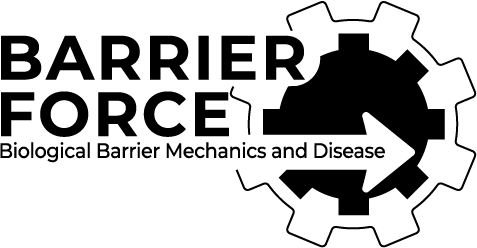Mechanical forces across compartments coordinate cell shape and fate transitions to generate tissue architecture
Clémentine Villeneuve, Ali Hashmi, Irene Ylivinkka, Elizabeth Lawson-Keister, Yekaterina A. Miroshnikova, Carlos Pérez-González, Satu-Marja Myllymäki, Fabien Bertillot, Bhagwan Yadav, Tao Zhang, Danijela Matic Vignjevic, Marja L. Mikkola, M. Lisa Manning & Sara A. Wickström
Nat Cell Biol. 2024
ABSTRACT
Morphogenesis and cell state transitions must be coordinated in time and space to produce a functional tissue. An excellent paradigm to understand the coupling of these processes is mammalian hair follicle development, which is initiated by the formation of an epithelial invagination—termed placode—that coincides with the emergence of a designated hair follicle stem cell population. The mechanisms directing the deformation of the epithelium, cell state transitions and physical compartmentalization of the placode are unknown. Here we identify a key role for coordinated mechanical forces stemming from contractile, proliferative and proteolytic activities across the epithelial and mesenchymal compartments in generating the placode structure. A ring of fibroblast cells gradually wraps around the placode cells to generate centripetal contractile forces, which, in collaboration with polarized epithelial myosin activity, promote elongation and local tissue thickening. These mechanical stresses further enhance compartmentalization of Sox9 expression to promote stem cell positioning. Subsequently, proteolytic remodelling locally softens the basement membrane to facilitate a release of pressure on the placode, enabling localized cell divisions, tissue fluidification and epithelial invagination into the underlying mesenchyme. Together, our experiments and modelling identify dynamic cell shape transformations and tissue-scale mechanical cooperation as key factors for orchestrating organ formation.
PMID:38302719 | DOI: 10.1038/s41556-023-01332-4
